Sensory input is constantly coming at us. Whether we're in a quiet place by ourselves or at a busy shopping mall, sensory experiences are shaping how we perceive the world around us. Sensory overload happens to all of us, but for children with sensory processing issues, it can be overwhelming. These children may not have the tools and coping skills to handle all the sensory information their bodies are taking in.
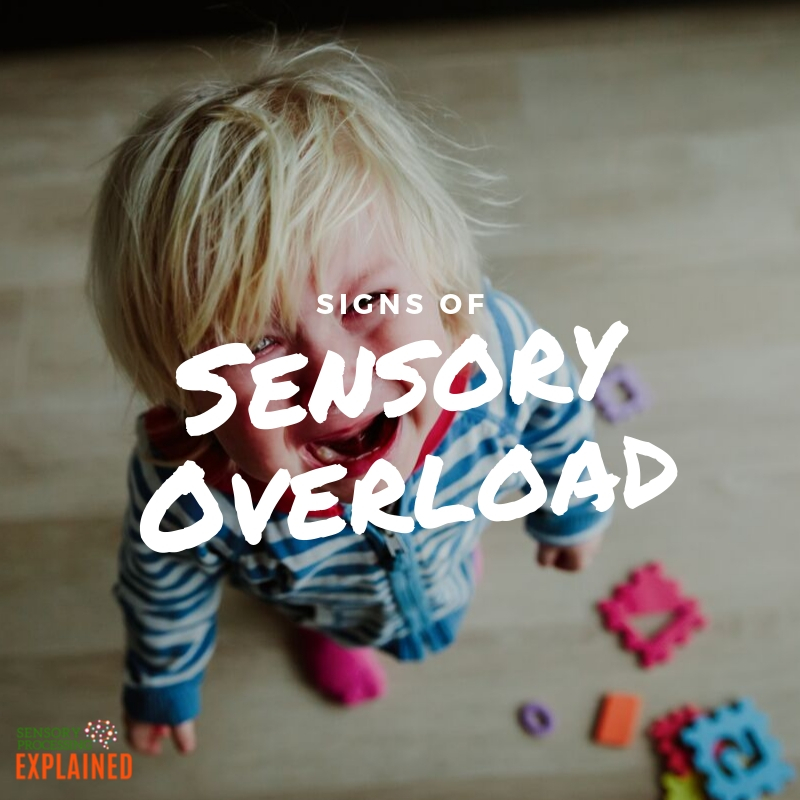
A special note for teachers: Each of us responds to sensory input differently, so this can be especially overwhelming and challenging to accommodate in the classroom. Recognizing how each student might respond to being overwhelmed by sensory input is a good place to start. Below, I am sharing some sensory processing overload signs that you can watch for in your students when in the classroom or school settings.
What Is Sensory Processing?
Sensory processing is how the brain recognizes, categorizes, and responds incoming sensory input from the eight senses and the environment around us. Each of us respond to this input in different ways.
Hyper-responsive (also known as over-responsive or hypersensitivity) – “Sensory Avoiders” -These children responsive excessively to sensory input. The slightest movement, sound, or touch could send a sensory avoider into a negative behavior response.
Hypo-responsive (also known as hyposensitivity) – “Sensory Seekers” – These children do not receive enough sensory input and are constantly looking for it to get to that “just-right” level of arousal. They will not able to focus or attend to a task until they are at that just-right level which can impact their behaviors.
Under-responsive – These children exhibit a diminished response to sensory input. More sensory input is needed than for the average person in order to get a response. They can look like they are “tired” or “lazy”.
Each sensory system has a “hyper” or “hypo” or “under” type of response that you will see in children. You might notice all responses for the same sensory system depending on the activity (especially if it is a new experience that interests them, versus something the child has experienced before). It is also common for the same person to be hyper-responsive to some of the sensory systems and hypo-responsive or under-responsive to others.
Sensory overload happens when the body is unable to process, organize, and respond to all the incoming sensory input. Although this can happen to anyone, it is more common in those who have Sensory Processing Disorder (SPD) or sensory issues.
Why is it important to recognize the signs of sensory overload?
By catching the signs of sensory overload early, you can help your child to self-regulate and possibly even prevent a sensory meltdown. Sensory overload is not the same as a sensory meltdown, but it is often the precursor to one.
When children have sensory processing disorder or challenges, it makes them more susceptible to sensory overload. As such, they may not be able to recognize the signs themselves unless they are taught to do so. This is why it is so important for their teachers or parents to be on the lookout for clues that sensory overload is occurring.
It is also important to talk with the child about those signs to help them be able to notice them in themselves. This is something that is usually best done afterward when the child has calmed down and is no longer showing signs of sensory overload.
Sensory Processing Overload Signs in Children
- appears to have a higher level of activity (over-excited) or sensitivity than normal during or following an activity
- becomes increasingly distracted, disoriented, or confused
- may feel nauseous and/or vomiting
- sudden paleness or flushed, sweaty, or clammy skin
- rapid breathing or slower shallow breathing
- decreased or increased muscle tone
- tremors
- glazed-over look in the eyes or signs of a possible seizure
- drowsiness/fatigue
- sleeplessness
- irritability and/or angry outbursts
- “shuts down” and refuses to participate in an activity
- makes poor eye contact
- covers their eyes around bright lights
- covers their ears to avoid loud sounds or voices
- avoids being touched or touching others
- constantly changing a task, never finishing
- fidgeting and restlessness
Sensory Processing Overload Signs in the Classroom
It is important to note that you may not notice these signs right away. A child may go for hours (or days) before showing these signs. Some children will try to “hold it together” at school and then “meltdown” when they go home. It's important to discuss this with parents and keep an open dialog. I often suggest keeping an activity or behavior log so that you can have communication going back and forth from the classroom to home and back.
Be sure to seek medical attention when needed for any of these responses.
- Appears to have a higher level of activity (over-excited) or sensitivity than normal during or following an activity
- Becomes increasingly distracted, disoriented, or confused
- May feel nauseous and/or vomiting
- Sudden paleness or flushed, sweaty, or clammy skin
- Rapid breathing or slower shallow breathing
- Decreased or increased muscle tone
- Tremors
- Glazed-over look in the eyes or signs of a possible seizure
- Drowsiness/fatigue
- Sleeplessness
- Irritability and/or angry outbursts
- Shuts down and refuses to participate in an activity
- Makes poor eye contact
- Covers eyes around bright lights
- Covers ears to avoid loud sounds or voices
- Avoids being touched or touching others
- Constantly changing a task, never finishing
- Fidgeting and restlessness
Free Download of Sensory Overload Signs
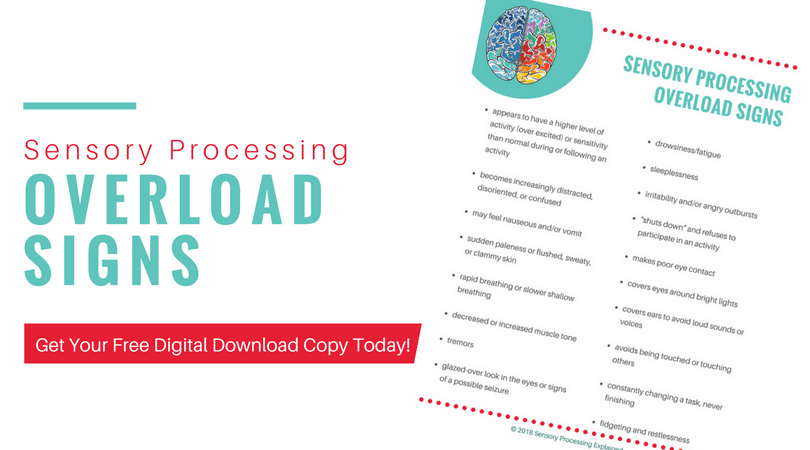
Enter your email address below to get a free download of Sensory Processing Overload Signs. You will also receive weekly emails from Growing Hands-On Kids with more tips and activity ideas just like this one. You will also receive promotional emails for new printables or resources. You can unsubscribe at any time.
By downloading this freebie, you are agreeing to our terms of use and privacy policy.
Are you feeling overwhelmed by the tantrums and meltdowns?
Could your child’s behavior be a sensory meltdown?
You can empower yourself and your child to overcome these meltdowns with proven sensory tips, tools, and strategies.
Let’s get started! Join us in the brand new Overcoming Sensory Meltdowns digital video course!
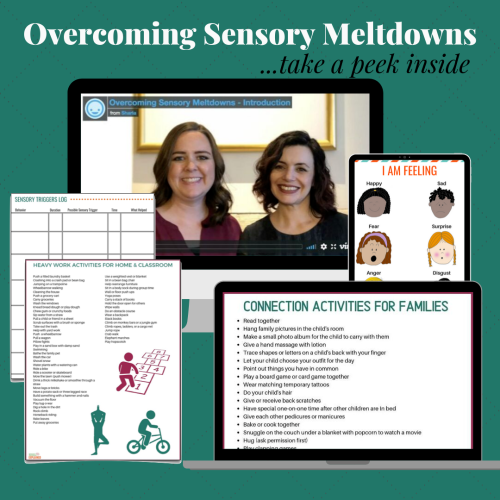
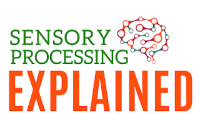
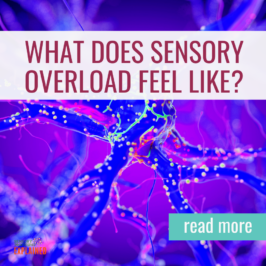
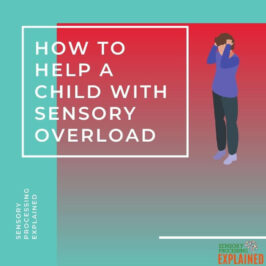
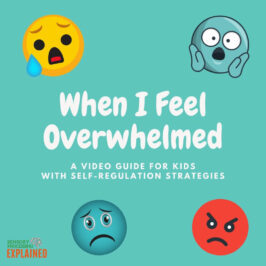
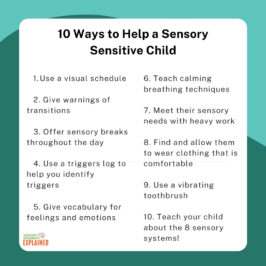
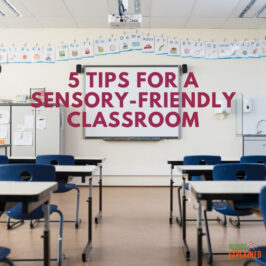
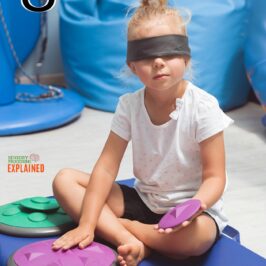
Jenni Webster
would love a copy of the Sensory Processing Overload Signs
SPE
Hi Jenni, We got the form working in this post, so you should see it to download the handout now!
Janelle Golden
Hello Team,
I noticed my child covers his ears sometimes when awaking in the morning. Could this be a sign of sensory sensitivity?